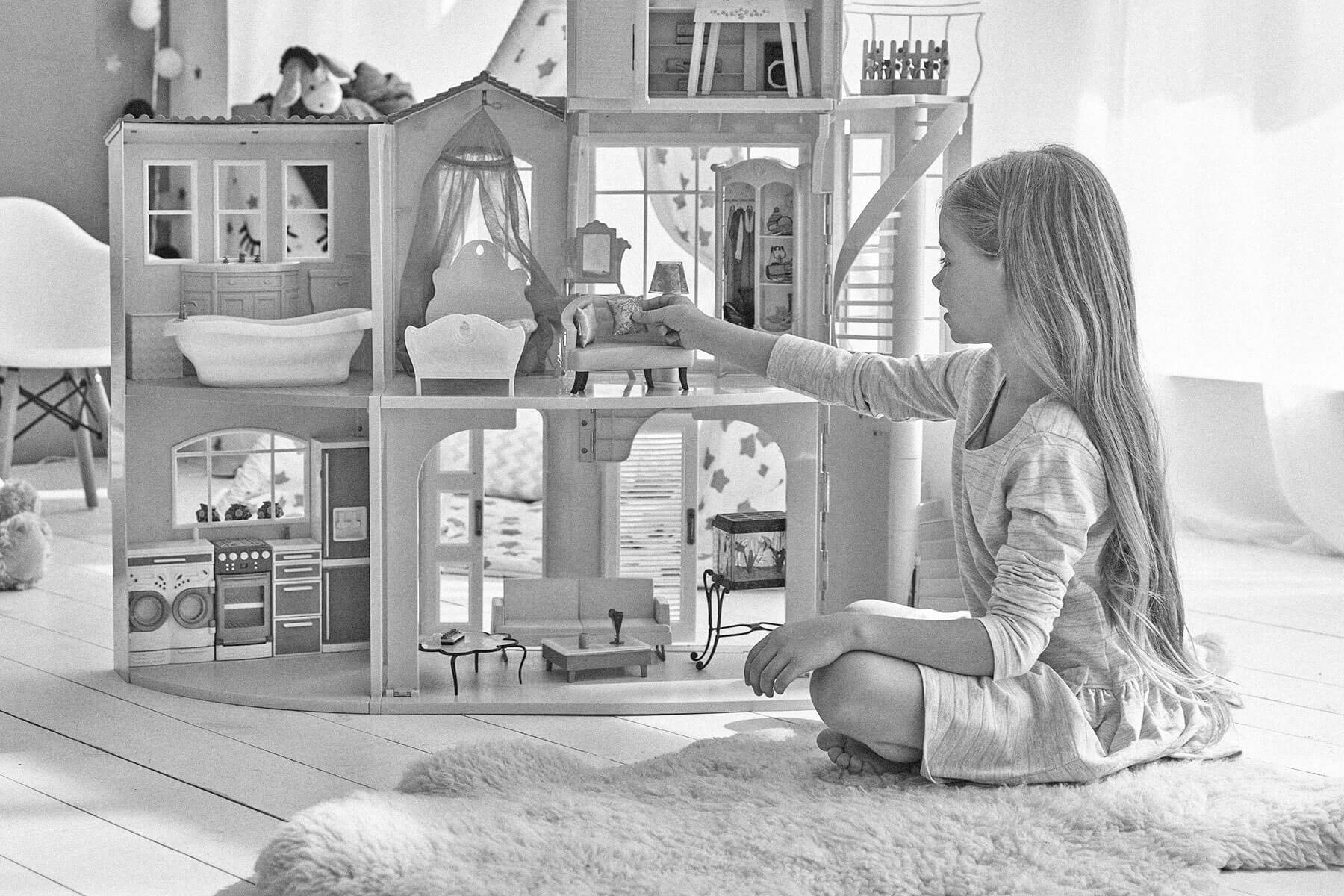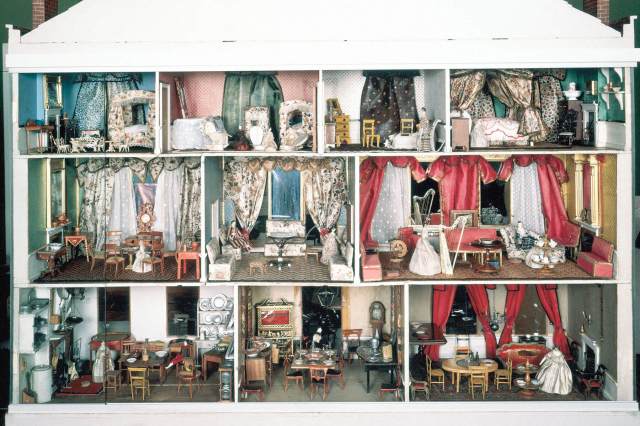A Tiny History of Dollhouses
The concept of miniature dwellings traces back to ancient civilizations, when Egyptians placed small clay replicas of their houses and belongings in and around burials. These models were intended to provide the comforts of home to the deceased in the afterlife. Although the tiny dwellings we know as dollhouses today are quite different from these ancient versions, their history also includes purposes other than play. Over the last 500 years, dollhouses have evolved from elaborate displays for adults, to useful household teaching tools, to enduring objects of imagination and aspiration for children.

Early Origins
The earliest known dollhouses were made in the 16th century, primarily in Germany, and later in Holland and England. Known as a “dockenhaus” (miniature house), “cabinet house,” or “baby house” (because of the size, not the intended audience), these handcrafted items were not initially made for children to play with — they served as display cases for wealthy adults to fill with miniature furniture, fabrics, and artwork that reflected their own taste and lifestyle.
One of the earliest recorded examples of a dollhouse is the Munich Baby House. Commissioned by Albert V, the Duke of Bavaria, in the 1550s, the piece was made by skilled artisans in the shape of a royal residence (instead of a wooden cabinet like the dominant style that soon followed). Though the Munich Baby House was lost in a fire in the 1600s, Albert V had the object detailed in an inventory of his household goods. Historians believe that the Munich Baby House was likely made for the duke’s entertainment, but some suggest it may have been built as a gift for his daughter, which would make it an early example of a dollhouse for children.



















